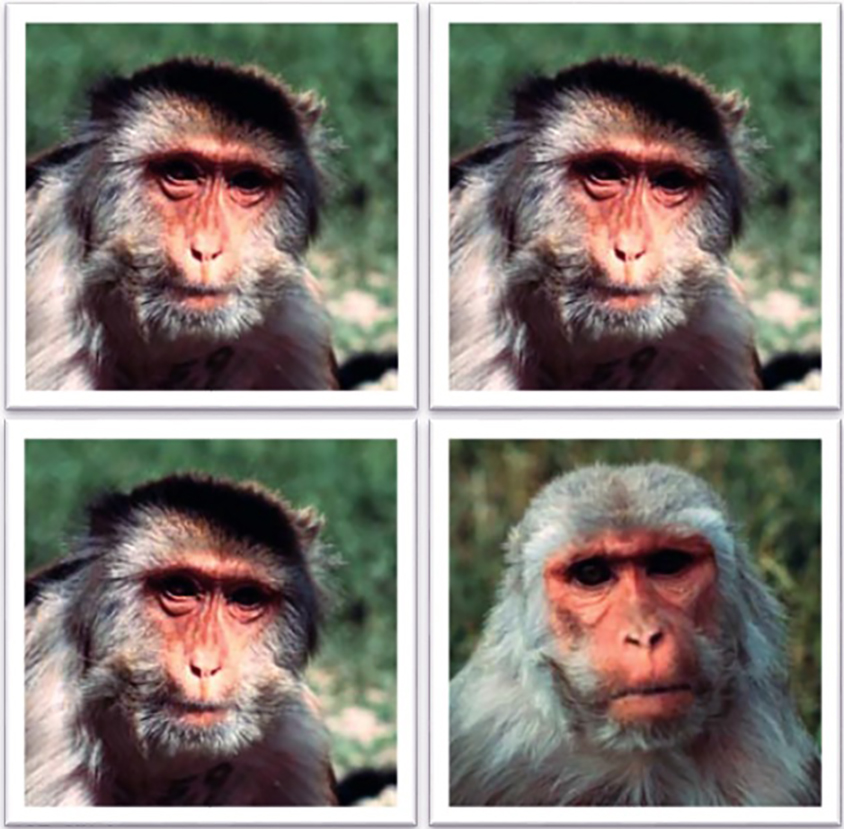
THIS ARTICLE IS MORE THAN FIVE YEARS OLD
This article is more than five years old. Autism research — and science in general — is constantly evolving, so older articles may contain information or theories that have been reevaluated since their original publication date.
On a typical day at the California National Primate Research Center in Davis, California, some monkeys spend their time chasing, wrestling and grooming each other. Others stay on the outskirts of this action, spending most of their time alone.
As infants, these solitary monkeys struggled to recognize faces and looked a little too long at angry monkeys, according to a new study1. The findings suggest that social deficits emerge early in monkeys, as they do in people. Scientists may be able to use these early signs to develop drugs that reinforce social cues.
“We were interested in creating a primate model that has direct relevance to behavioral features that are seen in people with autism,” says lead researcher Karen Parker, associate professor of psychiatry and behavioral sciences at Stanford University in California. “Early intervention is the goal in autism, and when you’re thinking about animal models of neurodevelopmental disorders, you want your interventions to be early as well.”
The monkeys don’t have autism. Rather, they showcase a natural range of sociability. But monkeys, like people, recognize faces and react to facial expressions, making them well suited for studies on the complex social patterns seen in people with autism.
“Monkeys use the same kinds of neural circuitry involved in the processing of facial cues as people do,” says Larry Young, chief of behavioral neuroscience at Emory university in Atlanta, who was not involved with the study. “That puts you much closer to what’s going on in a human social brain than a mouse does.”
Social scene:
Each corral at the primate center is home to as many as 180 rhesus macaques. The monkeys roam freely about the half-acre outdoor space, which is speckled with tire swings, jungle gyms and hidden food.
Parker and her team discreetly watched 164 male monkeys, recording the frequency and type of interactions between the animals over 20-minute periods. They identified 50 monkeys — 25 at each end of the social spectrum — aged 1 to 4 years.
The researchers then looked back at the monkeys’ performance on a series of tests when the animals were 3 to 4 months old. One test involved looking at pairs of monkey faces projected onto screens. The ‘low-social’ monkeys were less likely on average than the ‘high-social’ ones to notice a new face.
In another test, the monkeys watched videos of an unfamiliar adult monkey. Some videos showed the stranger exploring its cage, whereas others showed it grinding its teeth or lunging toward the camera. Low-social monkeys averted their gaze from aggressive monkeys less often than high-social monkeys did, the researchers found.
The researchers were able to use these results to determine with perfect accuracy whether an infant monkey would become low- or high-social.
“It is compelling that they were able to predict with high fidelity where the monkeys will end up,” says Michael Platt, director of the Wharton Neuroscience Initiative at the University of Pennsylvania.
The monkeys’ natural social variation could allow researchers to test drugs to boost social abilities in people, says Platt. “I think that’s exciting.”
Parker and her colleagues plan to look for biomarkers of social ability that could aid in testing therapies.
By joining the discussion, you agree to our privacy policy.